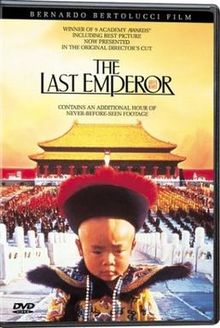Regard to this topic, the media practitioner I want to talk about is Ryuichi Sakamoto who is one of the greatest composer, music producer, and pianist from Japan.

He is active in various art fields as a musician. He has built the hippest electronic band, written many symphonies, and also created the soundtrack for many movies, the most famous of these is the world-renowned Merry Christmas Mr Lawrence, The Last Emperor, and The Revenant. ‘He has always made a point of bringing disparate things together in his music, not out of some ideological desire to “break down barriers” but out of a simple delight in the results. Electronic noise and impressionist harmonies, sweetly pentatonic melodies and driving dance beats, live happily together in his music’ (Iven 2011, para. 8).

His most creative point is exploring the types of music constantly and keep the balance between the commercial and experimental music besides these well-known business collaborations. He has asserted that the future belongs to the folk and electronic music, but he never pursued a particular music type, instead, he combines two or more kinds of music creatively. ‘1997, Iwai produced the masterful audiovisual performance Music Plays Images X Images Play Music, in collaboration with the composer Ryuichi Sakamoto, which explored a wide variety of possible relationships between physical sound-actions and their virtual graphic representations’ (Levin & Lieberman 2004). In 1978, the YMO band he built used the electronic music as a form of expression to enrich and develop folk music, jazz and dance music as the content. The YMO band expands the type of electronic music and pushes Japanese electronic music to the world.

Ryuichi Sakamoto has moved to a broader art field after the film Merry Christmas Mr Lawrence. He participated in the music production of The Last Emperor, he created 44 songs In the absence of the instrument, and won The Oscar for the best original song award, became the first Japanese to win this award.

Ryuichi Sakamoto keeps exploring the experimental music and ambient music in recent years. For example, the audience heard English, Italian, Chinese, Cantonese and other different languages have been repeating a movie monologue in his song fullmoon. In his album async, he recorded the voices that people usually ignore such as the sound of the foot on the leaf, the sound of animals and crowd. He tries to use these ‘sound moments’ to express an open attitude. Like Ryuichi Sakamoto said ‘I shouldn’t know what I’m making, or what it will be. I want to make something I don’t know, and that I’ve never done or never known. Hopefully, for me, it’s going to be a surprise, and a new experience’ (Brandon 2017, para. 4).
References:
Brandon, S 2017, ‘Ryuichi Sakamoto on how your work changes as you get older’, The Creative Independent, 13 October, viewed 12 August 2018, <https://thecreativeindependent.com/people/ryuichi-sakamoto-on-how-your-work-changes-as-you-get-older/>.
Ivan H 2011, ‘Ryuichi Sakamoto: the music dried up’, The Telegraph, blog post, 21 October, viewed 12 August 2018, <https://www.telegraph.co.uk/culture/music/worldfolkandjazz/8841379/Ryuichi-Sakamoto-the-music-dried-up.html>.
Levin, G, and Lieberman, Z 2004, ‘In-situ speech visualization in real-time interactive installation and performance’, In NPAR, vol. 4, pp. 7-14.